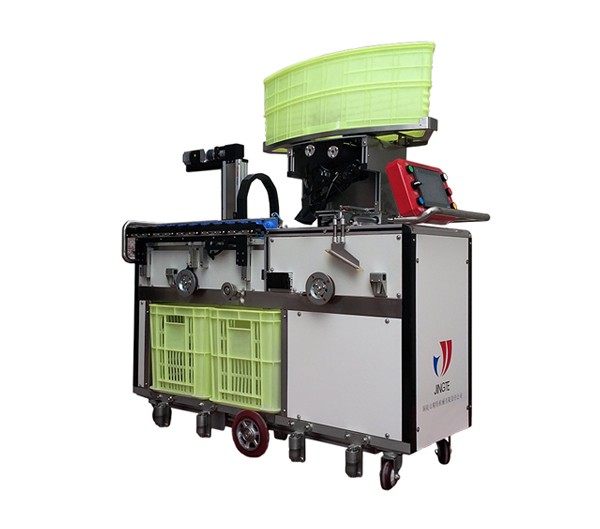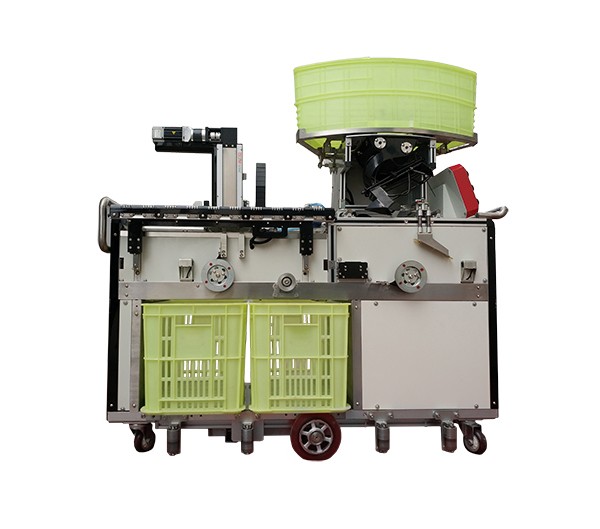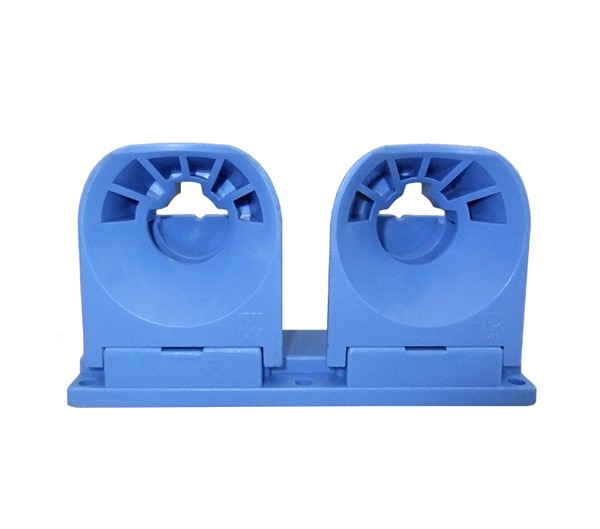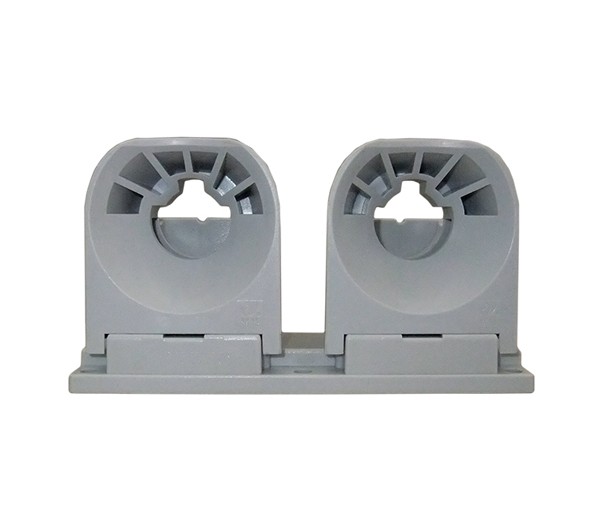Three problems need to be solved in China's textile machinery industry
來源:未知 發(fā)布時(shí)間:2015/1/31 0:00:00
China's textile industry is in a critical period of transformation and upgrading. In just a few years, a large number of new Mechatronics textile equipment has been emerging, which is welcomed by users. However, it is undeniable that the overall situation of the textile industry is slightly depressed after a period of sustained development and growth. Textile machinery as a part of the textile industry, the situation is not optimistic.
In order to reverse the adverse situation and strengthen the momentum of development, China's textile machinery industry needs to solve the following three problems.
Question 1: Mechanized imitation
At present, there is a big gap between domestic textile machinery and foreign equipment in stability, failure rate and reliability. Compared with the general half-month running-in period of foreign equipment, the failure rate of domestic equipment often takes several months or even more than half a year is still on the high side. In addition, the author once heard the sales manager of a textile mill describe the process of developing combers. First, a more advanced comber was surveyed and mapped on the spot in a cotton mill, and then it took less than half a year to manufacture and market it. This may be exaggerated, but it also reflects from the side that some domestic manufacturers only imitate mechanically, without digestion, absorption, investment, research process, so how can we produce high-quality machines? In fact, in the context of global division of labor, independent innovation is a comprehensive process closely related to system integration, processing equipment and technology, and management level. The gap between China's textile machinery equipment and foreign countries is not only a gap in technological invention, but also a comprehensive lag in technology, talent and management.
Question 2: One-sided exaggeration of product function
In order to obtain orders and seize the market, some textile machinery enterprises, by configuring accessories and equipment that do not meet the original design requirements, promote the highest level achieved in the experiment as a normal index, unilaterally exaggerating the function of the equipment. Taking the spinning automatic drop frame as an example, some machines claim that it takes 3-4 minutes for each row of yarn, and the retention rate is more than 97%, but the actual yarn arrangement takes more than 4.5 minutes on average, and the retention rate is less than 96%. Maintenance work is very heavy, machine material consumption is much higher than expected, this hidden loss is huge. This kind of disguised fraud is not responsible for users, but also for themselves.
In addition, in the process of introducing new textile machinery and equipment to the market, there is still a phenomenon that the operation is not standardized enough. It is understood that the new equipment exhibited by textile machinery enterprises at the International Textile Machinery Exhibition in Europe will not be introduced to the market after at least two years'test in the experimental factory or the enterprise factory with which they cooperate. At present, there are still many domestic textile mills, intentionally or unintentionally, directly regard cotton mills as experimental factories, using lower market prices as bait to promote newly designed but untested equipment. The problem lies in that the prototype is not equal to commodity. The prototype has not undergone fatigue tests such as reliability, stability and failure rate for a considerable period of time in the experimental factory or affiliated yarn mill. It is often rushed into the market. The configuration of the prototype is inconsistent with that of the market. After being put into production, not only can it not achieve maximum efficiency, but also the risk will be transferred to the use factory, which will cost the user a lot of manpower and material. Power.
Question 3: Equipment can't keep up with mainframe
Some textile mills in the development of equipment, or how to convert samples into practical products to satisfy users, there are some problems, such as design is not standardized, do not pay attention to innovation, do not take into account the function of each component, material, process and so on.
First of all, the quality of key components is not good or the selection is not appropriate, and the processing and assembly accuracy can not meet the design requirements. The quality of equipment and components directly determines the quality of the whole machine. Equipment allocation is not in place, there is no standard, only according to the price agreed with customers, high price, configuration is good; low price, poor configuration. Secondly, the technology lag between the textile machinery and its related supporting equipment. According to the author's understanding of the textile market, at present, there are three aspects lagging behind: first, the lag of equipment after high-yield is more prominent; second, the maintenance methods of high-end equipment can not keep up with the requirements; third, the key points of high-speed new equipment maintenance and the lag of refueling standards. Thirdly, the relevant supporting technology of process boarding is not in place, so that the process can not really long-term and stable boarding. Textile mills are often accustomed to mainframe production and seldom study the production technology and process software of popular products on the market. In fact, in some cases, it is not the poor performance of the equipment, but the lack of reasonable process configuration according to the raw materials produced by customers. Therefore, to some extent, textile mills should also employ first-class textile technicians to assist in the design of textile machines.
In order to reverse the adverse situation and strengthen the momentum of development, China's textile machinery industry needs to solve the following three problems.
Question 1: Mechanized imitation
At present, there is a big gap between domestic textile machinery and foreign equipment in stability, failure rate and reliability. Compared with the general half-month running-in period of foreign equipment, the failure rate of domestic equipment often takes several months or even more than half a year is still on the high side. In addition, the author once heard the sales manager of a textile mill describe the process of developing combers. First, a more advanced comber was surveyed and mapped on the spot in a cotton mill, and then it took less than half a year to manufacture and market it. This may be exaggerated, but it also reflects from the side that some domestic manufacturers only imitate mechanically, without digestion, absorption, investment, research process, so how can we produce high-quality machines? In fact, in the context of global division of labor, independent innovation is a comprehensive process closely related to system integration, processing equipment and technology, and management level. The gap between China's textile machinery equipment and foreign countries is not only a gap in technological invention, but also a comprehensive lag in technology, talent and management.
Question 2: One-sided exaggeration of product function
In order to obtain orders and seize the market, some textile machinery enterprises, by configuring accessories and equipment that do not meet the original design requirements, promote the highest level achieved in the experiment as a normal index, unilaterally exaggerating the function of the equipment. Taking the spinning automatic drop frame as an example, some machines claim that it takes 3-4 minutes for each row of yarn, and the retention rate is more than 97%, but the actual yarn arrangement takes more than 4.5 minutes on average, and the retention rate is less than 96%. Maintenance work is very heavy, machine material consumption is much higher than expected, this hidden loss is huge. This kind of disguised fraud is not responsible for users, but also for themselves.
In addition, in the process of introducing new textile machinery and equipment to the market, there is still a phenomenon that the operation is not standardized enough. It is understood that the new equipment exhibited by textile machinery enterprises at the International Textile Machinery Exhibition in Europe will not be introduced to the market after at least two years'test in the experimental factory or the enterprise factory with which they cooperate. At present, there are still many domestic textile mills, intentionally or unintentionally, directly regard cotton mills as experimental factories, using lower market prices as bait to promote newly designed but untested equipment. The problem lies in that the prototype is not equal to commodity. The prototype has not undergone fatigue tests such as reliability, stability and failure rate for a considerable period of time in the experimental factory or affiliated yarn mill. It is often rushed into the market. The configuration of the prototype is inconsistent with that of the market. After being put into production, not only can it not achieve maximum efficiency, but also the risk will be transferred to the use factory, which will cost the user a lot of manpower and material. Power.
Question 3: Equipment can't keep up with mainframe
Some textile mills in the development of equipment, or how to convert samples into practical products to satisfy users, there are some problems, such as design is not standardized, do not pay attention to innovation, do not take into account the function of each component, material, process and so on.
First of all, the quality of key components is not good or the selection is not appropriate, and the processing and assembly accuracy can not meet the design requirements. The quality of equipment and components directly determines the quality of the whole machine. Equipment allocation is not in place, there is no standard, only according to the price agreed with customers, high price, configuration is good; low price, poor configuration. Secondly, the technology lag between the textile machinery and its related supporting equipment. According to the author's understanding of the textile market, at present, there are three aspects lagging behind: first, the lag of equipment after high-yield is more prominent; second, the maintenance methods of high-end equipment can not keep up with the requirements; third, the key points of high-speed new equipment maintenance and the lag of refueling standards. Thirdly, the relevant supporting technology of process boarding is not in place, so that the process can not really long-term and stable boarding. Textile mills are often accustomed to mainframe production and seldom study the production technology and process software of popular products on the market. In fact, in some cases, it is not the poor performance of the equipment, but the lack of reasonable process configuration according to the raw materials produced by customers. Therefore, to some extent, textile mills should also employ first-class textile technicians to assist in the design of textile machines.




